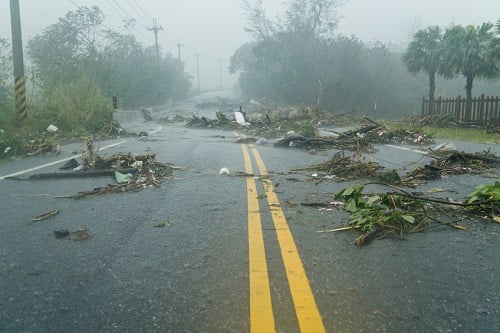

The 2017 North American storm season was less of an eye opener, and more of a spine tingling, gut wrenching, rude awakening! After years of benign natural catastrophe activity, mother nature dropped by with a painful reminder of her wrathful capabilities.
Insurers and reinsurers worldwide have taken significant financial hits as a result of hurricanes Harvey, Irma and Maria, accompanied by a devastating earthquake in Mexico, one of the worst wildfire seasons in US history, plus Typhoon Hato in China and Cyclone Debbie in Australia.
Huge insurance names like XL Group, Markel, Munich Re, and Beazley are among a long list of (re)insurers to have posted catastrophe-driven dips in 2017 profits. XL Group reported natural catastrophe pre-tax losses net of reinsurance, reinstatement and premium adjustments at US$315.2 million for the fourth, catastrophe-filled quarter of 2017 – compared to US$246.1 million in the prior quarter. Likewise, specialist insurer Beazley saw its total profits slide from $293.2 million in 2016 slide to $168 million last year.
So, are these billion-dollar storms the new normal? And if so, what can insurers and reinsurers do to prepare and protect themselves? Insurance Business caught up with Tom Larsen, senior principal of industry solutions at CoreLogic, a data and analytics firm, to find out.
“Billion-dollar storms are becoming more normal. As we become more populated, develop more land, and invest more into buildings and infrastructure, the exposures to natural catastrophes are also growing,” he said. “Where a storm used to rain on fields, it now floods streets and damages homes. That, by nature, is going to push up the cost of these events.
“In 2017, America had its first hurricane for 10 years. The hurricane drought before that remains unexplained, but we do expect hurricanes to strike more regularly in the future, and we expect more years with multiple billion-dollar events. The insurance industry is making progress in dealing with these costly storms, but there are still things they can work on.”
Larsen said there are three key areas where the insurance industry can improve: pricing, aggregation and response. Insurers can do better to price for the actual risk of a house, according to Larsen. They can use pricing to “subtly influence” homeowners and developers to mitigate risk and build properties to high standards.
“Aggregation is something insurers continually have to work for. The insurance contract is a promise to be able to repay, and it implies insurers have sufficient funds to cover these events. But for some of the larger events, where there’s an awful lot of distress, there are still more surprises for the insurance industry than there should be,” Larsen commented. “Insurers can improve by using data modelling and analytics to get a better understanding of these large losses, in order to prepare for future events.”
The final area of improvement Larsen identified is the response to catastrophic storms. Damages certainly occur at the eye of the storm, but then they continue to tally up with time. Getting a claims adjuster on the scene as soon as it’s safe and possible is vitally important.
“There’s an awful lot of efficiencies that can help insurers manage their financial exposure to natural catastrophes,” Larsen added.
Related stories:
“This is really testing the whole industry”
Will natural catastrophe losses drive jump in reinsurance ratings?
